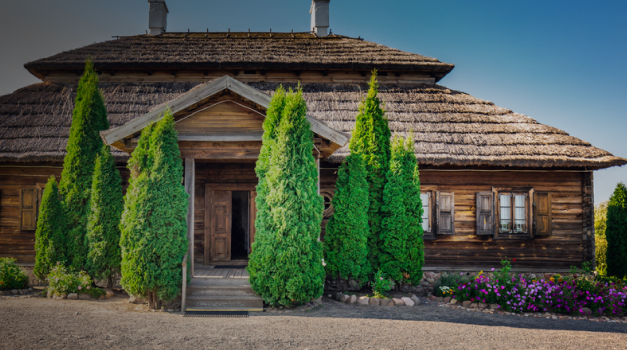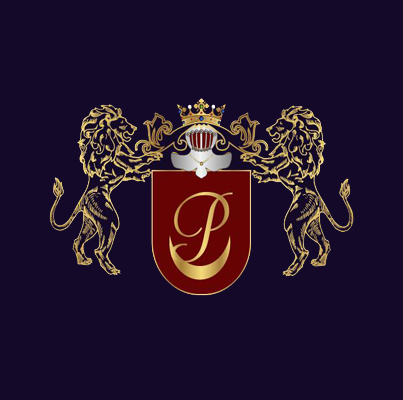Kosciuszko of Siechnowicze family
Ancestors, pedigree, parents of Tadeusz Kosciuszko. According to the historian Anatoly Benzeruk in historical documents, the ancient Belarusian family of Kosciuszko of the coat of arms “Roh-III” was first mentioned from the first quarter of the 15th century, from the time of Vitovt the Great.
Their full surname sounded like Kostyushko-Sekhnovichsky.
It was under this name that the family was, of course, in the official office work of the Grand Duchy of Lithuania, starting from the middle of the 16th century.
The ancestors of Tadeusz Kosciuszko lived in Belarus for nine whole generations, they were the owners of the land between Kamenets, Brest and Kobrin.
The center of their heritage for a long time, since 1509, was the small estate of Sekhnovichi (in the modern Zhabinka district of the Brest region).
The Kosciuszko clan numbers over 200 people. At the origins of the clan appears Kostyushko Fedorovich (about 1490 - 1561?), The service book of the Grand Duke of Lithuania and King of Poland Zhigimont I the Old, from whom he received the possession of Sekhnovichi.
Both parts of the family name combined the name of the founder and the name of the family nest.
In 1561, the first significant division of the family and its possessions took place between the sons of Kostyushko - Ivan (1530? - 1571) and Fedor (1540? - 1622).
At the same time, Kosciuszko was forever divided into two large branches, called "Ivanavichi" and "Fedaravichi" (in honor of their founders).
Moreover, the older branch successfully existed until the twentieth century. Her gentry was confirmed in 1852 by the Russian Senate and attested in the First Book of the nobility of the Grodno province.
But the younger branch died out (from the male side) precisely with the death of General Tadeusz Kosciuszko.
His direct ancestor was the grandson of Fedor Kostyushko-Litvinov Yan Grigorievich (1600? - 1647/1648), under whom the Sekhnovichi estate reached its prosperity.
Around 1620. Yan Grigorievich, founded a wooden chapel, where his descendants were buried for almost 150 years. (In the 18th century, the chapel was rebuilt by Alexander Jan Kosciuszko).
None of the many ancestors of Tadeusz Kosciuszko betrayed, took the side of the enemy and showed him his back during the battles.
In the state, they held rather modest positions, but they always carried their noble honor high.
The son of Yan Grigorievich - Alexander Yan Kostyushko-Sekhnovichsky (1629 - about 1711), Brest paddak, not only strengthened the family inheritance, but was also the first to create the family tree of his family.
His son and heir Ambrozij Kosciuszko (1667 - about 1722) - Tadeusz's grandfather - was defined by an extremely proud character. Once he even made an attempt on the life of Count Ludwik Patey, as he considered his words as his own insult.
At the same time, Ambrogia's wife, Barbara from the Glevski clan, was an example of female beauty and tolerance. Perhaps, Tadeusz Kosciuszko received some of his character traits from his grandparents.
Tadeusz's father, Ludwik Tadeusz Kosciuszko-Sekhnovichsky (circa 1700 - 1758), a sword-bearer of Brest and an honorary colonel of the mace of the Grand Duchy of Lithuania, devoted his whole life to saving the family estate, which had become impoverished from frequent wars that rolled in clusters across our land.
The Polish historian Felix Konecny once remarked that “the colonel lived with a pencil in his hand,” because he knew how to draw beautifully, wrote well and was generally an aesthetically educated person. Difficult circumstances forced him to temporarily transfer the Sekhnovichi estate for the use of his uncle, the cornet Faustin Benedict Kosciuszko (1672 - 1755). There was an agreement: as soon as Ludwik finds the opportunity to collect the required amount of money, the property will be returned to him again.
In the meantime, the colonel became the tenant of the Merechevshchina farm near Kossovo, received from the noble Sapieha.
At this time he also met a woman who became the colonel's dear wife.
Tadeusz's mother Thekla came from the Ratomsky family, well-known in Belarus.
Her childhood was very difficult. As the local historian Gleb Tishuk falls, Fekla was born in 1718 in the Orsha district.
Her grandfather in the 17th century. acquired the Krichin farm, which was located on the left bank of the Berezina River (now Borisov district).
Fyokla's father Florian Kazimir Ratomsky was married to Brygita from the Romanovich clan, who gave birth to two daughters and suddenly died immediately after the appearance of the youngest, Fyokla.
Florian married a second time with Rosa of the Caribbean, lived with her for 10 years, was very ill and died on his estate Draza, leaving his daughters to raise Rosa: eleven-year-old Barbara and ten-year-old Thekla.
Six months after the death of her husband, her stepmother, in 1729, married Andrei Rykhlitsky, an economist in Drozdov. The guardians of underage orphans, appointed by the Grand Tribunal of the Grand Duchy of Lithuania, reported about the difficult and painful life of the girls, in particular, that the stepmother sold part of the inherited property of Barbara and Thekla, took some of the inheritance to her father's estates, and did not give the girls any upbringing and education.
In the end, the orphans left Rosa and her new husband.
First, they were sheltered by their own uncle Benedict Ratomsky, and after his death - by Aunt Teresa Ratomskaya, with whom they were brought up until they got married.
Around mid-1739 or early 1740. Ludwik Kosciuszko, as he was jokingly called then, “the old bachelor,” married Fökla.
They lived constantly in harmony and respect.
Ludwik, even before his marriage, won a lawsuit against Prince Sapieha, which concerned the Merechevshchina farm, where he settled in 1730.
Later he brought his young wife here.
Four children were born in the family of Ludwik and Thekla: Anna (1741 - 1814), Joseph (1743 - 1789), Catherine (1744 - 1791) and the youngest - Tadeusz (1746-1817).
Father Tadeusz died when the boy was only 12 years old.
Suddenly, the death of his father in April 1758 left a deep mark on his soul.
The priests of Ludvik Kosciuszko were priests of the Carmelite monastery from Krupchitsy, the Bernardine monastery from Slonim, Uniate priests from Zditovo and Bashenki, as well as representatives of the Orthodox brotherhood from Kobrin.
As Tadeusz Korzan writes, all the surroundings before Brest at the funeral of Ludwik Kosciuszko were filled with the farewell sound of the bells of Christian churches.
His remains found their last rest in the patrimonial Sekhnovichi chapel, next to the burials of their ancestors.







